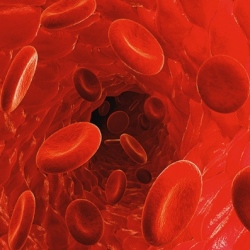
OHSU is using the same approach for other vaccines, starting with one against tuberculosis, which kills nearly 2 million people a year. Successful trials of the HIV vaccine will amount to a huge step forward in the fight against AIDS and give a green light to to attack other deadly infections, including malaria and hepatitis C.
"HIV is the poster child because it affects so many people, but there are many other conditions that are also extremely challenging to prevent or cure," said Dr. Marcel Curlin, an infectious disease specialist at OHSU who will run the HIV trials.
Getting OHSU’s HIV vaccine to market could take just under a decade and cost tens of millions of dollars. Researchers need thousands of volunteers in Portland and across the country.
The vaccine is based on a weakened but "live" version of cytomegalovirus that’s been engineered to look like HIV to the immune system. Cytomegalovirus is essentially the chassis that carries HIV-like genetic material into the body. HIV has been difficult to fight with a vaccine because the immune system must be trained to attack it. That takes time.
But cytomegalovirus has the unusual characteristic of keeping the immune system’s killer T cells, the body’s storm troopers, on high alert. By stitching HIV-like bits onto cytomegalovirus, the body is trained to attack HIV.
This approach, developed by OHSU’s Dr. Louis Picker, is novel. Most vaccines rely on antibodies to kill pathogens before they take hold. This vaccine attacks HIV, the virus that causes AIDS, after cells become infected.
In animal trials, the vaccine has cured 50 to 60 percent of infected monkeys. Picker hasn’t been able to figure out why he can’t improve that rate. He suspects it has to do with the virulence of the virus used to infect the monkeys. Simian immunodeficiency virus is much more powerful than HIV.
"When you have such a hot pathogen, you can’t defend the gates of Rome against every invader," Picker said. Picker hopes the vaccine will be more effective in humans. But before it can be tested for effectiveness, it must be proven safe.
While the vaccine contains genetic material similar to HIV to attract killer T cells, it can’t infect volunteers with the virus. The human version of the vaccine resembles the one tested on monkeys, though OHSU still has a few technical details to work out. "It’s one thing to produce it in our lab and it’s another to manufacture it in a way to make it suitable for people," Picker said.
The manufacturing will be done by IDT Biologika, a German vaccine company with a U.S. base in Maryland, and could take perhaps six months. The first safety trial, due to start next year, will involve four groups, with the dose increasing in potency 10 times with each subsequent group.
The point of the safety trial is to monitor volunteers for adverse reactions and to check their immune response. If the vaccine produces severe side effects, the trial will stop.
If it doesn’t produce any immune response, researchers will have to go back to the drawing board. But they don’t expect that to happen, Curlin said.
The Food and Drug Administration has final authority over clinical trials. If the vaccine passes the first test, a second round of safety trials will be held with a bigger group of volunteers. The next step will test how well the virus works. To do that, the trials will take place in an area like South Africa where HIV infections are prevalent.
Other HIV vaccines are ahead of Picker’s in this trial process. But he’s not worried about that. It might take more than one vaccine to rid the world of HIV, he said.
If his approach succeeds, OHSU vaccines against tuberculosis, hepatitis C and the herpes virus could follow in the future.
"This prototype will affect all of those," Picker said. "That’s why we want to (get) it right."
